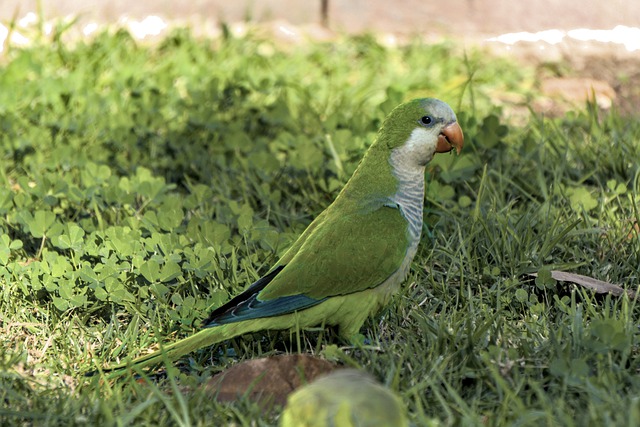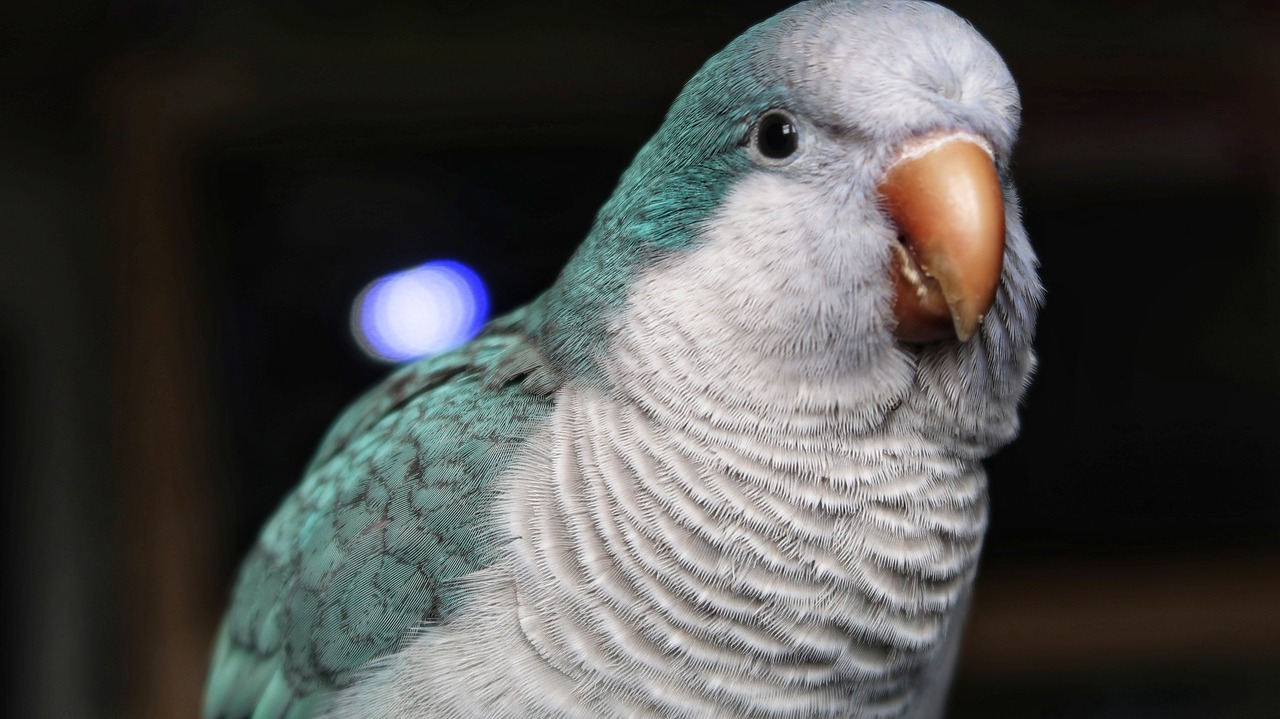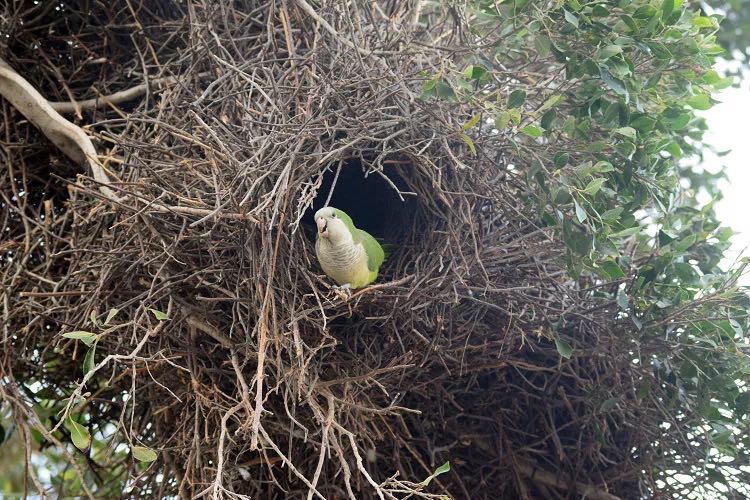Comprehensive Guide to Monk Parakeets: The Perfect Pet for Your Home

The Monk Parakeet (scientific name: Myiopsitta monachus), also known as the Quaker Parrot or Monk Parakeet, is a small to medium-sized bird renowned for its lively character and exceptional mimicry skills. These parrots, with their rich social behavior and unique feather colors, have become a favorite pet in many households.
Origins and Colors of Monk Parakeets

Monk Parakeets have an interesting historical background to their name. It is said that their frequent nodding resembles worshippers in prayer, and the color and shape of the feathers on their heads resemble the hoods worn by monks when tapping wooden fish, thus earning them the name “Monk Parakeet.” Beyond the common green, these parrots come in shades of blue, white, and yellow, each adding a unique personality to the individual birds.
Characteristics and Pros & Cons
Monk Parakeets excel in verbal skills among medium and small parrot species, often referred to as “the poor man’s Amazon” due to their comparative affordability and strong vocal abilities. These parrots are highly interactive with humans, especially when hand-fed from a young age, showing a strong social inclination.
However, one notable downside is their high-volume and watery droppings, which can make daily cleaning a significant chore. They are sometimes humorously nicknamed “the poop kings,” but adjusting their diet can mitigate this issue, reducing the frequency and messiness of their droppings.
Social Behavior and Nest Building

Monk Parakeets are highly social birds that not only enjoy living in groups but also actively interact with humans. They use branches, grass, and other plant materials to build complex communal nests, usually located in tall trees or man-made structures, showcasing their excellent cooperation and architectural skills.
Care Instructions
Monk Parakeets require a sufficiently large cage and a variety of toys to meet their need for activity. Their diet should be varied, including high-quality pellet food, fresh vegetables, fruits, and a moderate amount of nuts and seeds. Strict monitoring of their diet is essential to prevent obesity due to the intake of high-fat foods.
Health and Behavior Management
Monk Parakeets may display aggressive or excessive vocal behaviors due to loneliness or improper management. Providing ample social opportunities and mental stimulation, along with regular veterinary check-ups, can effectively manage these issues.
Legal Regulations
In the United States, Monk Parakeets are illegal to own in states like California, Colorado (if purchased after 1990), and Connecticut. Potential parrot owners need to understand and comply with local laws before acquiring these birds.
Frequently Asked Questions
- Suitability for Beginners: While friendly, Monk Parakeets’ noisiness and dominant behavior can be challenging for inexperienced owners.
- Origin: Native to South America, including Argentina, Bolivia, Brazil, and Paraguay.
- Breeding: Female Monk Parakeets can lay eggs from six months old without the need for a male.
Conclusion
Monk Parakeets win many people’s hearts with their friendly nature and impressive linguistic skills. Proper care and attention are key to ensuring these charming birds live a healthy and happy life. This guide aims to help you become an excellent Monk Parakeet caretaker, enjoying time with these delightful companions.